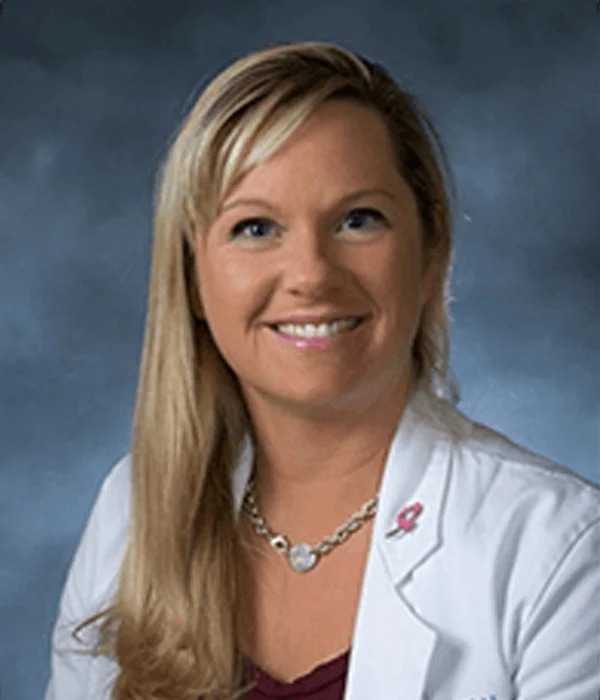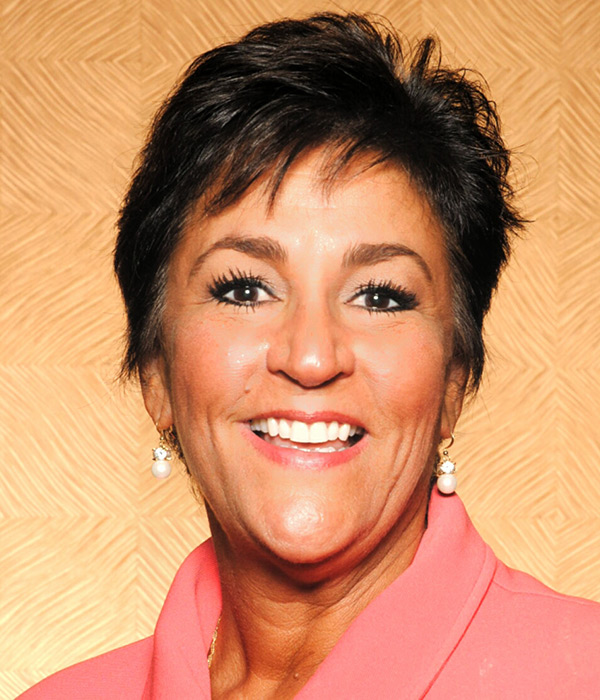
On-Demand
Package 3
$687
Earn 41.5 CME Credit Hours (Rx=7.75) on your time with this engaging new package of 2022 courses! Learn about spotting a heart attack, new dermatology drugs, diabetes, pediatric ortho, contraception use across the lifespan, and more. Features 8 tracks, 8 presenters, and our new enhanced viewing platform.
Course Overview For Package 3
- Cardiology &
Emergency Medicine - Dermatology
- Diabetes
- Orthopedics
- Pain Management
- Pediatrics
- Women’s Health

Classes by Jennifer Carlquist, PA-C, ER, CAQ
Basic Rhythm Interpretation
In this lecture, we will cover all the waves on the EKG and what they mean. We will also discuss the intervals, how to use them, and why they are essential. A review of Basic Arrhythmias will also be covered in this presentation.
Basic 12 Lead Interpretation
This course is a one-hour Basic 12 lead review. We will review normal cardiac conduction, normal EKGs, normal intervals and wave morphology, and some basic rhythm interpretation. Learn how to assess heart rate using the EKG and just a rhythm strip and how to trouble-shoot the EKG (artifact and 60 cycle interference). We will also discuss the PQRST model of EKG interpretation.
Challenging Cases (Rx=0.25)
Solve the mystery! In this lecture, we will have the opportunity to discuss the following cases:
A 29-year-old with palpitations and went home and collapsed from VT.
A 10-year-old female with a rash on the face, transferred to a tertiary facility with a pulmonary embolus, had V-tach on the way and lived. What was the connection between the two?
A 36-year-old female thinking she had bronchitis, wanted a Z pack and ended up getting airlifted to a nearby facility. She was diagnosed with prolonged QT syndrome and ended up going into V-tach in the hospital.
Afib Masterclass (Rx=0.25)
In this presentation, we will discuss which anticoagulant is the safest, which patients need anticoagulation, and what to do when you can’t anticoagulate your patient. How to risk-stratify your patient for stroke will also be discussed. This lecture has useful tips and a review on how to treat AFIB, including what medications to use. Also included in this presentation is a handy link to the updated CHADs score.
ACS Deep Dive (Rx=0.25)
This course will follow a patient with ACS from the emergency room to his cardiology follow up appointment. Learn about the “cardiac happy meal,” a combination of medications used post ACS event. We will conclude this topic with STEMI detection on the EKG.
Optional Workshop: Conquering Cardiology: Mastering the EKG
Do you know how much to worry about the next EKG that comes across your desk? Do you feel overwhelmed by all the things we have to know but don’t know where to start?
You may know how to pick up the big stuff like a STEMI, but do you know the 3 deadly things you can’t miss when the EKG software says non-specific st t wave changes?
When you are doing sports physicals, do you know the two deadly things you can’t miss on a Young person‘s EKG?
Do you know the 5 things you should always look for and document on any patient with palpitations? Do you know how to find an S1 q3 t3 and why this MATTERS?
Do you know what a Q wave is and when to worry about it? Do you know why the numbers on the top of the EKG matter, and how they can help you make the diagnosis of some lethal arrhythmias?
In this 2.5 hours hands-on course, we will cover all these things and more! We will discuss reciprocal changes and contiguous leads. You will get a chance to draw them on your sample EKG and make it into a cheat sheet you can use in the clinic. You will go hands-on in your workbook with 17 EKGs in class using pattern recognition to spot the high-risk findings. This hands-on approach helps you “put it all together” finally. If you feel overwhelmed by all the things we have to know but don’t know where to start, this is a quick condensed course that only focuses on the high-risk findings you need to know to be a safe provider.
Join the thousands of people who have already joined this Course in the past and are feeling more comfortable reading EKGs.

Classes by Kara Roman, MSN, ANP-BC, DCNP
A “Rash”ional Approach to Dermatologic Differential Diagnosis
This session is designed to equip the primary care provider with the skills to recognize over 40 common dermatologic conditions. By reviewing lesion morphology and distribution patterns, participants will be able to sharpen their skills and gain confidence in making these important diagnoses. Case presentations will stimulate discussion along with hundreds of interesting dermatologic images to assist in disease recognition. Don’t miss this opportunity to refine your ability to quickly and confidently diagnose dermatologic disease.
Tackling Topical Therapies (Rx=1.0)
“If it is wet, dry it; if it is dry, wet it; and if you don’t know what to do, put a steroid on it.” Dermatologic pharmacology is not so simple. A plethora of topical medications is utilized in primary care to manage conditions ranging from xerosis to contact dermatitis to cutaneous infections. To be utilized most effectively, the proper preparation, amount, and duration of therapy should be considered. This presentation will help the primary care provider make sense of the various commonly prescribed topical medications including topical corticosteroids, anti-infective agents, emollients, and several new agents that have recently become available. Medication dosing and safety will be addressed, as well as pearls and practical pointers for the most effective use of these products. Learn the what, when and how of dermatologic pharmacology.
Can You “Spot” the Diagnosis? Recognizing Melanoma and Non-Melanoma Skin Cancer in the Primary Care Setting
More people in the United States are diagnosed with skin cancer every year than all other cancers combined. According to the Skin Cancer Foundation, 1 in 5 Americans will develop skin cancer by the age of 70, and nearly two persons will die from it every hour. It’s common, it’s deadly, and it’s important to review these suspicious “spots” in our primary care patients. This session will provide the participant with the opportunity to review the clinical characteristics and visual clues that should prompt early biopsy and/or referral of suspected skin cancers.
Bacteria, Fungus, or Virus: Oh, My! An Update on Skin and Soft Tissue Infections (Rx=0.25)
The skin is a great line of defense, but it is not always perfect at keeping out microbial invaders. When microbes invade, infection ensues. The epidemiology and clinical presentations of common skin infections including tinea (capitis, corporis, pedis, cruris, unguium), HPV, molluscum, cellulitis, and abscesses will be reviewed in this session. The differential diagnosis and methods for confirming a diagnosis based on clinical presentation will be discussed and recommended treatment options for each type of infection will be specified.
What’s All the Buzz? Urticaria and Other Allergy-Mediated Skin Conditions (Rx=0.25)
Something stings you, you eat something, you take a new medication, you use a new product…you get a rash, and it itches. When an allergen is responsible for triggering the immune system, an allergic skin condition results. Allergy-mediated skin manifestations can be superficial like contact dermatitis or urticaria or can lead to more systemic reactions such as toxic epidermal necrolysis or anaphylaxis. Participants in this session will review the common skin findings in several allergic conditions and the diagnostic testing and management strategies that will both improve the look of the skin and potentially save lives.

Classes by Ji Chun, PA-C, MPAS, BC-ADM
Practical Guidance in Pharmacotherapy for DM 2 (Rx=1.0)
Pathophysiology of type 2 diabetes mellitus (DM2) is complex, with multiorgan defects contributing to hyperglycemia and its complications. Eight pathophysiologic organ defects were described as the “ominous octet” and is widely accepted in diabetes management. There are now 12 different classes of antidiabetic medications, including insulin. Each class has its own mechanism of action, and differentiating them is very important in order to build appropriate antidiabetic regimen for patients with DM 2 to address their multiorgan defects and reverse hyperglycemia. Numerous options with potential side effects/adverse events can be overwhelming not only for the patients but clinicians. Using the right medication with appropriate precautions can enhance patients’ adherence and outcomes.
Continuous Glucose Monitoring (CGM)
Do you remember the times we had to pee in a cup to see how well glucose is managed? Ever since home fingerstick glucose monitoring was available, monitoring diabetes control using urine glucose became history. With A1c and home glucose monitoring, rates of diabetes complications have significantly decreased, improving the lives of patients with diabetes. However, A1c and home glucose monitoring have its limitations, which can be filled by the new technology, continuous glucose monitoring (CGM). With new advances in technology and improved access, the use of CGM is rising, and more and more patients are interested in it. Soon, we may be saying, Do you remember the times we had to poke ourselves and get blood out to test it?
Type 3 Diabetes?
Due to the “epidemic” of patients with type 2 diabetes (DM2), any patients presenting with hyperglycemia are often defaulted to having DM2. Although much less common than DM2, other forms of diabetes (secondary diabetes) are present in 5-10% of diabetes and shall be considered. Timely and accurate diagnosis of these forms of diabetes will allow patients to address the real underlying pathology and get appropriate treatment to prevent disease progression.

CME Courses by Laurel Short, DNP, FNP-C
How to Master your Upper Extremity Exam and Treatment of the Lower Extremity
Musculoskeletal (MSK) problems are among the top reasons for primary care visits. Over half of chronic medical conditions in the United States are related to MSK diagnoses. These conditions are a leading cause of disability, resulting in both individual and societal burden. Achieving confidence with your head-to-toe musculoskeletal exam is the first step in diagnosing and managing MSK issues. This interactive session will provide a solid foundation for optimizing orthopedic care in the primary care setting. Emphasis will be placed on practical options for multimodal pain management in your busy practice setting.
Heads Up: Concussion Management
A majority of traumatic brain injuries in the United States are mild traumatic brain injuries (mTBI). Traumatic brain injury often occurs from sports injury, motor vehicle accidents, falls, and military trauma. By definition, concussion is mTBI, and there is growing knowledge about the pathophysiology and management strategies for concussion. This session will utilize case studies to inform your practice of assessment and treatment of acute concussion, as well as postconcussion syndrome. Topics will include assessment, medication and non-medication therapies, patient education, and return to learn/return to play.
The Three Common Mistakes in Spine Assessment
Is it a shoulder issue or neck problem? Is it a pain related to the lumbar spine or hip? These are common challenging scenarios for the primary care provider. There are many etiologies for neck and back pain, and often symptoms resolve with conservative measures. This session will focus on history and exam findings that allow for accurate diagnosis of neck and low back pain. Teaching approaches include exam demonstration, when to consider diagnostic testing, and comprehensive treatment plans. The discussion will include the use of both pharmacologic and non-pharmacologic modalities.
Become an Orthopedic Injection Pro with this Essential Toolkit (Rx=0.25)
Pain. It’s a significant topic, and the two epidemics of chronic pain and misuse of pain medications can be overwhelming as a healthcare provider. Performing joint and periarticular injections will enhance your practice and improve patient access to care. These injections are utilized to address pain, improve tolerance for rehabilitation, and diagnose musculoskeletal conditions. This session will include general information for musculoskeletal injections, as well as specific training for multiple injection sites. The presentation toolkit will include everything from needed supplies and procedure codes to video demonstration and patient aftercare.

Classes by Wendy Wright, DNP, ANP-BC, FNP-BC, FAANP, FAAN, FNAP
Management of Acute and Chronic Pain With and Without Opioids in the Primary Care /Urgent Care Setting (Rx=1.0)
Pain is the most commonly reported symptom in a primary care setting. This lecture will take you through the nuts and bolts of acute and chronic pain. Included in this discussion will be a focus on the importance of a comprehensive approach, including pain management specialists, primary care providers, nurses, complementary therapies, and modalities. In addition, a discussion on the importance of narcotic contracts and the regulation of controlled substances.
Pharmacology Update: Latest in the Management of GI, Infectious Diseases and Respiratory Conditions (Rx=1.5)
Keeping up to date on the latest treatment options for GI, respiratory, and infectious diseases is paramount for NPs, PAs, and MDs. This session will provide the attendee with the latest guidelines to treat a variety of conditions related to these body systems.

CME Courses by Daniel Wood, PA-C
Neurology Snapshot – Pediatric Mashup: Fussy Infant and Pediatric Headache
In music, a mashup is a creative blend of two different styles to create a transformative experience. Fussy infants are a frequent chief complaint for new and experienced parents and providers that cause anxiety. In a case study approach, the participant will work through case studies of fussy infants concluding with a mnemonic to assist the provider the next time they encounter a fussy infant in the clinic or emergency department. Pediatric headaches is another cause of anxiety, and the lecture will conclude with a quick case study of pediatric headache case.
Cardiology Snapshot- Game Show: Pediatric Chest Pain
In the spirit of a TV game show, we will answer questions about clinical chest pain scenarios in children. Pediatric chest pain is a frequent reason for an unscheduled visit to a primary care office or an emergency department in children and adolescents. Although alarming and unexpected to parents, chest pain in children is usually not caused by a serious disease – unlike in the adult population. Pediatric chest pain can broadly be classified into cardiac chest pain and non-cardiac chest pain. Questions will cover the causes of non-cardiac chest pain, far the most common cause of chest pain, and the differential diagnosis and management for cardiac chest pain, which includes inflammatory, increase in myocardial demand or decreased oxygen supply, and coronary abnormalities. The lecture will finish with a final round for double points.
Gastroenterology Snapshot- Pediatric HIIT Workout: Pediatric Abdominal Pain and Limping Child
Abdominal pain is common in children and adolescents, and evaluation requires an understanding of the pathogenesis of abdominal pain. Acute abdominal pain is common in children and adolescents and can range from a harmless bellyache to an emergency requiring immediate action. Assessing acute abdominal pain requires clinical acumen because making the incorrect diagnosis can have devastating consequences. Learn how to differentiate between which complaints require immediate attention and how to categorize abdominal pain as common or uncommon and serious or less serious. In a Tabata style – to avoid brain plateau – this lecture will finish with a quick case study of a limping child.

Classes by Shelagh Larson, DNP, APRN, WHNP-BC, NCMP
The “V”: The One Word You Cannot Say on TV
In this session, the discussion of vaginal basics will be presented. From tricks and tips on pelvic exams, infections, referrals, and pain will be shared from a frontline provider. You will learn the techniques of on the spot assessments without feeling awkward or hesitant. A review of a quick assessment of infections and the latest treatments with or without a microscope will be shared. A flip of the wrist can guide you to the proper referral. Treatments for pain, dryness, and itching will be outlined. Scripts for patient education will provide easy understanding for your patients and staff in explaining some of the hard stuff like pain. You will be performing pelvic exams like second nature.
In the Know: Practice Updates on Pap Smears, STD and Contraceptives
In this session, we will review the newest 2020 ACSSP guidelines on Pap Smears and what has changed. This will assist in the proper exams and referrals. The STD rates in this country are at an epidemic level with no relief in sight. We will review each infection, and the other places they hide and treatment guidelines. You will know your role in how to fight this war when medical STD Partner Therapy is presented. Confused by which birth control is best when other morbidities are involved? Or when your patients ask for certain devices or hormones? If you want to look like you are in the know, this is the presentation for you.
Is It Your Mate or Your Medication? Medications That Impact Sexuality (Rx=0.75)
So many people are taking multiple medications for every ailment under the sun. Everyone wants a pill for this and that. But it may be that those pills could be destroying their sexual drive and performances. In this presentation, a review of the stages of sexual response will be presented so further understanding of how and when medications impact this response will be appreciated. A discussion of each medication class will be examined. The drugs that have the most effect on the sexual response and alternatives that may be considered will be outlined. We will conclude with the drugs increase the sexual response in men and women.
Hot and NOT Bothered: Menopause Madness (Rx=0.25)
“I’m always sweating on the outside but frigid in the bed” may be something your patients want to scream but do not know how to start the conversation. Many providers do not feel comfortable starting the conversation either. Obstetrics and birth control is often extensively covered in our education curriculum. But menopause may get one lecture or two. Yet women spend over a third of their life in the phase. Past studies provided some confusing information about treatment and guidelines. In this session, we will discuss what’s out, what’s in and what is coming from hormones to osteoporosis to sexual health. Bring your fan, it may get hot in here!
Case Studies of those Difficult Patients: Amenorrhea, Menorrhagia, Sexual Dysfunction (Rx=0.25)
You know those patients that show up on your schedule that you dread all day? Not bleeding, too much bleeding, too much discharge, not enough. Yuck! Pearls will be provided on how to approach these appointments with confidence. We will take what we have learned throughout the day and apply it in these case studies. Interactive participation will keep you on your toes. You will walk away with the knowledge and assurance that you got this!